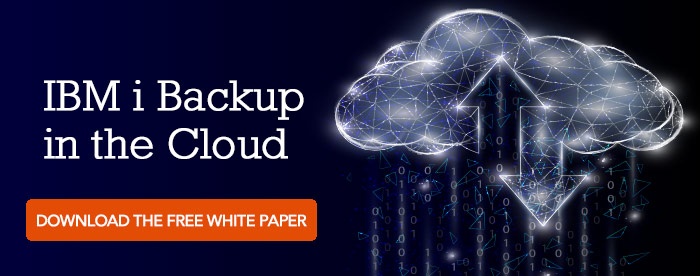Tape-based backup is older than most people reading this article, and many organizations are still using it as either a primary or secondary backup solution. With tape backup systems, data and systems are backed up to magnetic media and stored locally off-site in a (hopefully) secured tape storage facility. But there are a multitude of problems with tape backups, such as: tapes are usually stored in the same geographical area as the system they back up, and your tapes may not be available during a local or regional disaster, such as a hurricane, tornado or flood. Plus, tapes can also be lost, mis-labeled, or simply wear out. And let’s not forget that lengthy restore times make it difficult to meet RPO and RTO/ RTA goals.
When organizations running on IBM i finally realize that their current tape backup strategy no longer meets their needs, their decision is commonly spurred on by new requirements or backup and recovery failures, including:
- The organization has a tape restore failure, where they can’t recover corrupted or missing data or an entire partition.
- A new requirement is defined by a regulatory entity or law, such as Sarbanes-Oxley (SOX), the Payment Card Industry Data Security Standard (PCI DSS), or the European Union’s General Data Protection regulation (GDPR).
- A new requirement is specified by a Service Level Agreement (SLA), a large customer, or from an audit point.
- A regional disaster such as Hurricane Irma occurs, where their local backup solution is destroyed along with the production system it protects.
- A hack, virus infection, or ransomware attack hits their system and corrupts their files, and large-scale file restores must occur.
- They experience unintended data corruption or deleted objects that may take days, weeks, or months to discover and recover from. An organization’s backup and recovery system is their last line of defense for protecting data availability and integrity.
At some point, organizations realize that tape backup can no longer satisfy all their backup and recovery needs by itself and begin upgrading their backup and recovery strategy. There are a number of options for efficiently and effectively updating your IBM i backup and recovery solution. An experienced business partner like CloudFirst can help your organization select and implement the backup and recovery technology that’s right for your business, no matter what the company’s size and budget. Please feel free to contact CloudFirst, if you have any questions about improving your backup and recovery strategy.


